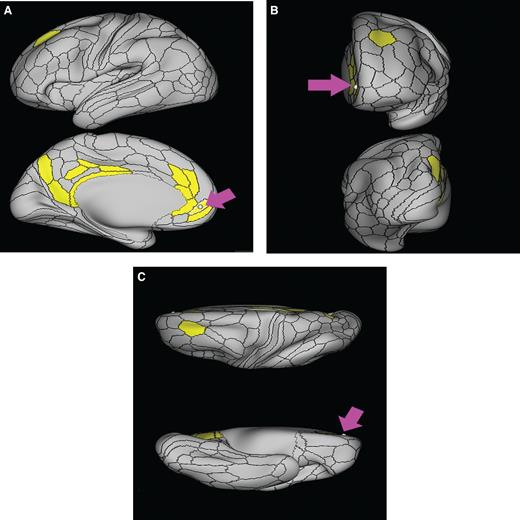It has long been observed that that getting away from civilization and into the countryside is a healing act. Henry Thoreau famously wrote of his self-observations while living upon Walden Pond, in between his stints in political activism. What does this mean in the brain?
Living in overcrowded conditions increases stress and oxytocin levels. Living in isolation, in males especially, increases vasopressin levels. Exposure to nature increases serotonin levels. Certainly these are major monoaminergic effects that partially explain the divide between liberal urban and conservative rural groupings as previously discussed. But I’m going to explore a different cavern now.
Social scientists have studied an abstract noun called urbanicity, which is an essential property related to living in urban areas. Two independent studies have both pinpointed a grey matter increase in area p32d in people who live in urban areas vs. those who live in rural areas. Other studies have found that p32d is activated in social norm violations (left p32d) and cultural norm violations (right p32d).

Left p32d (Parsons) is an archetypal assignment for Talcott Parsons, the sociologist who coined (or at least popularized) the term, ‘social norms’.
Right p32d (Sumner) is an archetypal assignment for William Graham Sumner, the sociologist who coined ‘mores’ and ‘folkways’.
The distinction I am making between Parsons and Sumner is that left p32d seems to be more concerned with manners, and right p32d seems to be more concerned with customs. For example, manners are what proscribes you from taking the last bagel, but customs are what proscribes you from cutting a bagel across St. Louis style.

The crowded urban area–and the crowded college campus–is a minefield of social faux pas that an individual has to navigate. Basting one’s self in these environments gives us the illusion that social norms are all there is. In this caged reality, a hyperdeveloped p32d may be what gives us this illusion.
References:
Effects of city living on the mesolimbic reward system,
Brain Structure Correlates of Urban Upbringing, an Environmental Risk Factor for Schizophrenia


